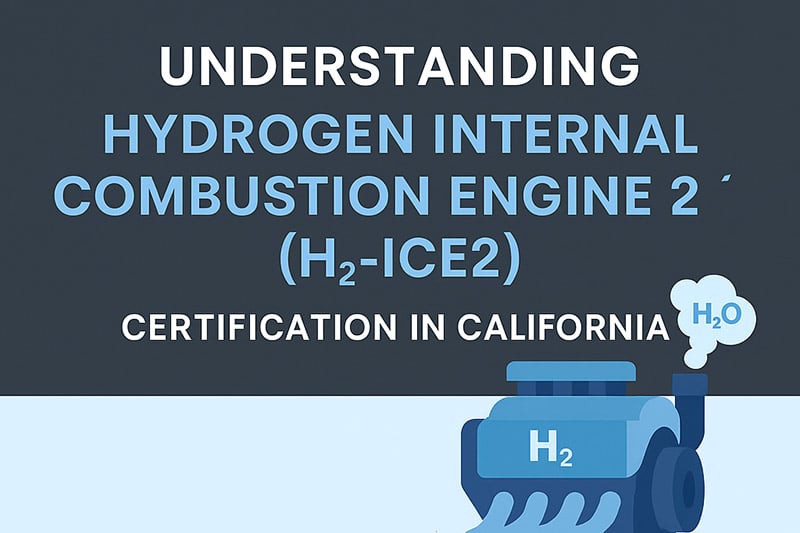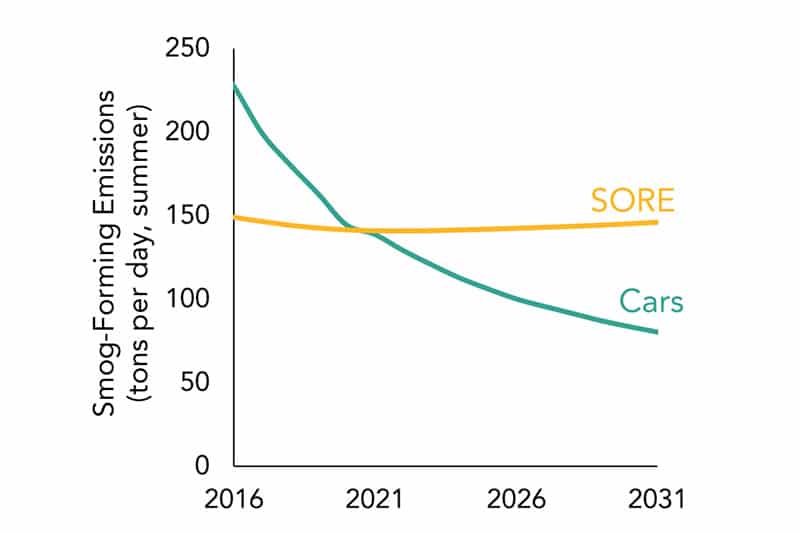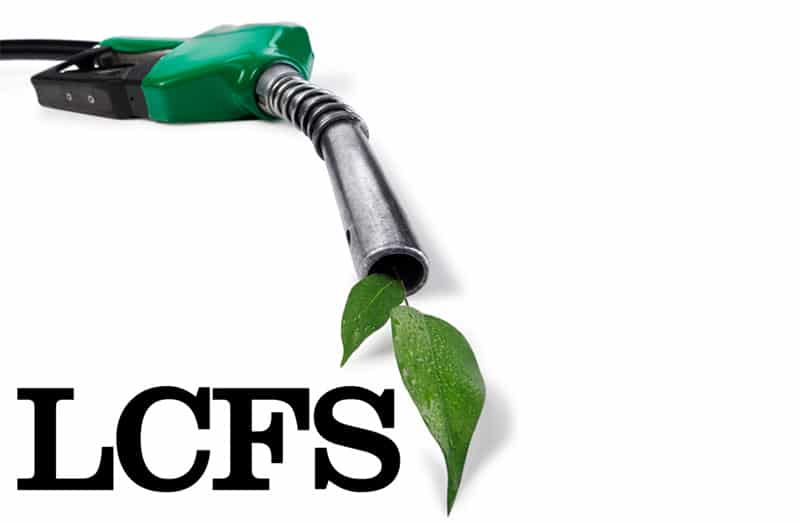Engine Certification Requirements
The engine and equipment manufacturing industry face heavy regulation from two main government bodies. The US Environmental Protection Agency (EPA) and the California Air Resource Board (ARB) both regulate emissions from mobile and stationary sources. Regulatory devices include extensive testing and application procedures in order to legally market and sell engines, equipment and technology in the United States.
In order to comply with the requirements engine manufacturers must follow strict testing procedures to demonstrate or certify that their engine or vehicle meets the engine emissions standards while operating in a specific service class (test cycle and weight restriction). An engine cannot be placed in a vehicle and operated outside its service class designation. Emission standards are set for a variety of service classes including new passenger cars (PC), light-duty trucks (LDT), medium-duty vehicles (MDV), heavy-duty engines (HDE) and vehicles (HDV) including urban buses (UB), on- and off-road motorcycles (ONMC and OFMC), all-terrain vehicles (ATV), and electric golf carts (eGC).
Large Spark Ignited Engines
EPA Certification Categories:
EPA certification of Large Spark Ignited engines excludes engines with less than 19kW maximum power output, Marine engines, On-highway engines, Locomotive engines, and all Compression Ignition engines.
The EPA has defined two clear and very distinct sets of requirements for Large Spark Ignited engines including stationary and nonroad mobile categories. It is critical that each ECO client that produces certified industrial engines is aware that the distinction between these categories is not always as simple as it might seem.
Bulldozers are literally mobile equipment. Mobile equipment can also be engines, pumps, generator sets, and PTO’s which are intended to be transported from one location to another and include such features as wheels, skids, carrying handles, dolly, trailer, or platform.
Stationary engines are often permanently installed to a site both indoors and outdoors. The stationary category applies to engines, pumps, generator sets, and PTO’s as well. The stationary category also applies to equipment intended to be transported from one location to another if it is not actually removed within 12 months.
Additionally, some mobile engine applications are federally preempted from statewide regulation; where stationary engines are subject to varying additional state and local jurisdiction.
ECO has significant experience helping our clients to combine the testing requirements for multiple applications in order to maintain a single engine family approved for both mobile and stationary use. This eliminates any potential use restrictions and the need to control the sales of your products.
EPA field inspectors reviewing stationary engines need to ensure that the correct standard is satisfied, or if the engine is not laboratory certified for stationary use that the owner or operator has performed a site certification.
EPA LSI Emissions Standards:
EPA emissions standards for Large Spark Ignited (LSI) engines are regulated by 40 CFR Part 1048. The LSI certification category applies to both mobile and some stationary engines.
In this category the minimum useful lifetime is 5000 hours of operation and engines must satisfy the standards at their full regulated lifetime.
EPA Tier 2 LSI exhaust emissions standards apply to certified LSI engines beginning in the 2007 model year. The Tier 2 HC+NOX standard is 2.7 g/kW-hr and the Tier 2 CO standard is 4.4 g/kW-hr.
The EPA Tier 2 standards for LSI engines also include an optional sliding scale allowing certified engines to satisfy the equation (HC+NOX) × CO0.784 ≤ 8.57. The following table includes possible Tier 2 emissions standards that satisfy this requirement:
Table 1 of §1048.101—Examples of Possible Tier 2 Duty-cycle Emission Standards

CARB LSI Emissions Standards:
Not all mobile certified engines are subject to CARB standards. Mobile engines used for construction equipment as well as agricultural equipment may be federally preempted from state regulation and as a result CARB is unable to impose additional more stringent standards. A complete list of preempted equipment application can be reviewed at:
http://www.arb.ca.gov/msprog/offroad/preempt.htm
Mobile generator sets are not preempted and CARB certification is mandatory to sell any mobile generator sets or individual engines to the state of California.
CARB emissions standards for Large Spark Ignited (LSI) engines impose more stringent emissions standards effective for the 2013 model year. Present CARB certified LSI engines are subject to the same EPA Tier 2 standards above.
2013+ CARB certified engines require compliance with the HC+NOX standard 0.8 g/kW-hr and the CO standard of 20.6 g/kW-hr.
EPA Stationary Emissions Standards:
EPA emissions standards for Stationary engines are regulated by 40 CFR Part 60. Any stationary engine that operates on NG must satisfy the following emissions standards:

Table 1 to Subpart JJJJ of Part 60—NOX, CO, and VOC Emission Standards for Stationary Non-Emergency SI Engines ≥100 HP (Except Gasoline and Rich Burn LPG), Stationary SI Landfill/Digester Gas Engines, and Stationary Emergency Engines >25 HP
Optional Paths for Stationary Engine Certification:
Site Certification:
Stationary only Natural Gas fueled engines can be sold uncertified. Uncertified engines may be installed by owners and operators and fall subject to site certification procedures. This requires each and every individual engine to perform emissions testing and site certification application and approval. Site certification is generally the approach used for engines that operate on landfill and digester gasses where the operation fuel properties have a large variation from site to site, and laboratory testing cannot represent the operation fuel.
Laboratory Certification:
Site certification of pipeline NG stationary engines is not likely to be attractive to potential buyers. A better option is to perform laboratory based certification. Certified engines that operate on pipeline NG may be sold and installed and operated without a need for your customers to perform additional testing or pay additional fees. In case of laboratory certification, manufacturers must carefully evaluate their installation requirements and develop literature needed to instruct owners and operators how to install engines represented by the laboratory testing that are covered by the EPA certificates.
CARB Stationary Emissions Standards:
CARB does not regulate stationary engines. EPA certified stationary engines can be sold in all 50 states including California. However, California has developed many individual air districts that have local ordinances that apply to stationary engines. Great care must be taken to ensure potential local air district requirements are satisfied. Site certification may be needed depending on the location of operation.
ECO has performed some research on different California Air Quality Management Districts and this activity is presently lead directly by our President Josh Pietak.
Additional Certification Considerations:
Deterioration Factors:
The EPA will allow small volume manufacturers to use assigned DFs. Small volume manufacturers must satisfy one of the following definitions:
(1) An engine manufacturer with U.S.-directed production volumes of engines subject to the requirements of this part totaling no more than 2,000 units in any year. This includes engines produced by parent or subsidiary companies.
(2) An engine manufacturer with fewer than 200 employees. This includes any employees working for parent or subsidiary companies.
CARB no longer allows the use of assigned DF’s by any LSI engine manufacturer. CARB certification will typically involve running a half-life service accumulation program to determine deterioration factors.
Useful Life:
In this category the minimum useful lifetime is 5000 hours of operation and engines must satisfy the standards at their full regulated lifetime.
For engines designed to operate for longer periods before overhaul is required, a longer useful lifetime period is required.
Field Testing Performance:
In addition to regulated emissions standards from the weighted composite test cycle, engines are also subject to field testing standards. Any potential operation point must directly satisfy the following requirements:
Table 3 of §1048.101—Examples of Possible Tier 2 Field-testing Emission Standards

Noncommercial Fuels:
Typically, Mobile and Stationary NG engines are tested and certified to operate on Pipeline NG only. Pipeline NG is delivered by municipal supply and has very tightly controlled composition and properties. Pipeline NG typically has a heating value of about 1050 BTU/SCFM.
Pipeline NG certified engines are not approved to operate on noncommercial fuels including but not limited to oil field wellhead gas, landfill gas, digester gas, synthetic gas, and other similar fuels with varying properties.
Special laboratory certification is also possible for engines designed to operate on Wellhead NG from oil wells. In case Wellhead NG operation is required, ECO has experience to develop laboratory testing procedures to test a range of fuel properties and to eliminate a need to perform site certification for installations that comply with the range of fuel properties evaluated.
Resulting noncommercial fuel certification is limited to a specific range of fuel properties selected by the manufacturer and demonstrated during emission testing. Additionally such engines are permitted to include user adjustments to properly set up engines for the specific fuel properties at ach installation site.
Evaporative Emissions:
Engines that run on a volatile liquid fuel (such as gasoline), must meet the following evaporative emissions standards and requirements:
- Evaporative hydrocarbon emissions may not exceed 0.2 grams per gallon of fuel tank capacity when measured with the test procedures for evaporative emissions.
- For nonmetallic fuel lines, MORs must specify and use products that meet the Category 1 specifications in SAE J2260.
- Liquid fuel in the fuel tank may not reach boiling during continuous engine operation in the final installation at an ambient temperature of 30 °C. Note that gasoline with a Reid vapor pressure of 62 kPa (9 psi) begins to boil at about 53°C.
The regulations allow MORs to use design-based certification instead of generating new emission data.
Delegated Assembly:
Manufacturers that do not supply the full contents of their certified engine bill of material are required to utilize delegated assembly provisions. Delegated assembly allows for a 3rd party to source components to the certifying manufacturer’s specifications, but also require the certifying manufacturer to control and audit such operations.
Diagnostics:
Mobile certified engines are required to detect significant malfunctions in the emission-control system using the following protocols:
- If the emission-control strategy depends on maintaining air-fuel ratios at stoichiometry, an acceptable diagnostic design would identify malfunction whenever the air-fuel ratio does not cross stoichiometry for one minute of intended closed-loop operation. MORs may use other diagnostic strategies if EPA approves them in advance.
- Use a malfunction-indicator light (MIL). The MIL must be readily visible to the operator; it may be any color except red. When the MIL goes on, it must display “Check Engine,” “Service Engine Soon” when required.
Adjustable Parameters:
Adjustable parameter means any device, system, or element of design that someone can adjust (including those which are difficult to access) and that, if adjusted, may affect emissions or engine performance during emission testing or normal in-use operation. This includes, but is not limited to, parameters related to injection timing and fueling rate. You may ask us to exclude a parameter that is difficult to access if it cannot be adjusted to affect emissions without significantly degrading engine performance, or if you otherwise show us that it will not be adjusted in a way that affects emissions during in-use operation.
Engines must satisfy all emission criteria with any adjustable parameters set to any possible position, or manufacturers must employ tamper resistance methods sufficient to protect such adjustments from tampering.
Crankcase Emissions:
Crankcase emissions may not be discharged directly into the ambient atmosphere from any engine throughout its useful life.
Torque Broadcasting:
Electronically controlled engines must broadcast their speed and output shaft torque (in newton-meters). Engines may alternatively broadcast a surrogate value for determining torque. Engines must broadcast engine parameters such that they can be read with a remote device, or broadcast them directly to their controller area networks. This information is necessary for testing engines in the field. Small-volume engine manufacturers may omit this requirement.
AECD’s:
Auxiliary emission-control device means any element of design that senses temperature, motive speed, engine rpm, transmission gear, or any other parameter for the purpose of activating, modulating, delaying, or deactivating the operation of any part of the emission-control system.
AECD Device Descriptions must be included with certification applications and shall be reviewed as potential defeat devices.
Maintenance Instructions:
Manufacturers are required to give the ultimate purchaser of each new engine written instructions for properly maintaining and using the engine, including the emission-control system. The maintenance instructions also apply to service accumulation on emission-data engines.
Critical emission-related maintenance. Critical emission-related maintenance includes any adjustment, cleaning, repair, or replacement of critical emission-related components. You may schedule critical emission-related maintenance on these components if you meet the following conditions:
Demonstrate that the maintenance is reasonably likely to be done at the recommended intervals on in-use engines. We will accept scheduled maintenance as reasonably likely to occur if you satisfy any of the following conditions:
- You present data showing that, if a lack of maintenance increases emissions, it also unacceptably degrades the engine’s performance.
- You present survey data showing that at least 80 percent of engines in the field get the maintenance you specify at the recommended intervals.
- You provide the maintenance free of charge and clearly say so in maintenance instructions for the customer.
- You otherwise show us that the maintenance is reasonably likely to be done at the recommended intervals.
You may not schedule critical emission-related maintenance more frequently than the following minimum intervals:
- For catalysts, fuel injectors, electronic control units, superchargers, and turbochargers: The useful life of the engine family (5,000 hours).
- For gaseous fuel-system components (cleaning without disassembly only) and oxygen sensors: 2,500 hours.
Recommended additional maintenance. You may recommend any additional amount of maintenance, as long as you state clearly that these maintenance steps are not necessary to keep the emission-related warranty valid. If operators do the critical maintenance specified above, but not the recommended additional maintenance, this does not allow you to disqualify those engines from in-use testing or deny a warranty claim. Do not take these maintenance steps during service accumulation on your emission-data engines.
Special maintenance. You may specify more frequent maintenance to address problems related to special situations, such as substandard fuel or atypical engine operation. For example, you may specify more frequent cleaning of fuel system components for engines you have reason to believe will be using fuel that causes substantially more engine performance problems than commercial fuels of the same type that are generally available across the United States. You must clearly state that this additional maintenance is associated with the special situation you are addressing.
Maintenance that is not emission-related. For maintenance unrelated to emission controls, you may schedule any amount of inspection or maintenance. You may also take these inspection or maintenance steps during service accumulation on your emission-data engines, as long as they are reasonable and technologically necessary. This might include adding engine oil, changing air, fuel, or oil filters, servicing engine-cooling systems, and adjusting idle speed, governor, engine bolt torque, valve lash, or injector lash. You may perform this non emission-related maintenance on emission-data engines at the least frequent intervals that you recommend to the ultimate purchaser.
Production Line Testing:
Manufacturers must select engines from the production line quarterly for PLT testing.
PLT testing is required by manufacturers for every engine family with an anticipated production volume of 150 units per year. Manufacturers that produce more than 150 engines can choose to test 1% of production or to satisfy a cumsum statistic
Measured emissions levels of PLT test engines are deteriorated and compared to the standard (1%) or subjected to statistical significance calculations (cumsum) to determine if the quarterly testing is completed or if additional engines must be tested.
In-Use Testing:
Any certified LSI engine family must comply with the emissions standards on the prescribed certification test cycle. Additionally, certified LSI engines must also comply with the emissions standards when operated in-use. The EPA has developed an audit function to ensure that engines continue to meet the certified emissions standards in-use. Any certified engine family is subject to in-use testing. At any time, a manufacturer may receive a request from the EPA to perform in-use testing on any certified engine family.
If an in-use test order is received, a manufacturer will have one year to prepare a list of engines in the requested engine family and determine the actual operating hours and usage and prepare a test plan to test a minimum of 2 engines within 2 years of the date the test plan is approved by the EPA.


